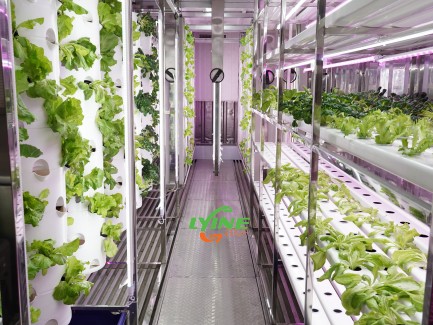When it comes to sustainable agriculture, many people may dismiss it as unnecessary. As a major grain exporter, China is unlikely to face food shortages. Implementing sustainable agriculture is not only for the good future of our generation, but also for the account of future generations. In fact, not all countries are as vast as China, and even in our country, there is still a shortage of per capita arable land. For example, it is difficult to achieve the freedom of vegetables and fruits in countries with a shortage of water and soil resources.
Among them, the Middle East region has a tropical desert climate, with high temperature and heat all year round, drought and little rain. Moreover, the rivers are scarce, most of them belong to no flow areas, and water resources are very limited. Because the water resources in this area are very valuable, drip irrigation is used in agriculture, which can improve the utilization rate of water resources and save a lot.At present, there is a new agricultural technology with high water utilization efficiency - aeroponics vertical farming. It has great attraction for countries like the Middle East.

What is the aeroponics vertical farming?
Vertical farming is a hierarchical planting method that is stacked in vertical space and can be integrated into other structures, such as skyscrapers, shipping containers, or converted warehouses. The main purpose of vertical farms is to maximize crop yields in limited space.
Aeroponic system is currently the most advanced planting technology among soilless cultivation techniques. It can obtain the most sufficient oxygen from the environment by suspending plant roots and growing them in a nutrient fog environment with high humidity. At the same time, mist dispersion technology can obtain water and nutrients in the most direct way, which is the most suitable, sufficient, and direct supply method for the three factors of water, fertilizer, and gas. So it exhibits a growth rate that any cultivation mode does not possess.

Combining aerosol culture technology with vertical farming can increase crop yields while maximizing space use.It is one of the most water-saving cultivation modes, especially suitable for developing. Aeroponics vertical farming in an environment lacking water resources. Its water saving efficiency can reach 90%, which means that only 1/10 of the water used for soil cultivation can achieve the same biomass growth.
The sustainability of agricultural production has now become the focus of global attention. So what kind of agriculture is sustainable? How to develop sustainable agriculture?Traditional agriculture solves the problem of eating for all, while vertical agriculture meets greater demand, that is, where vegetable supplies cannot reach and the needs of the most purchasing population. The former demand is a timely and immediate one, while the latter is an inevitable result of the reconfiguration of market factors. But what will the future of farming look like? There will definitely be a market in the future that belongs to vertical agriculture, which is the future of sustainable agriculture.






.jpg)


